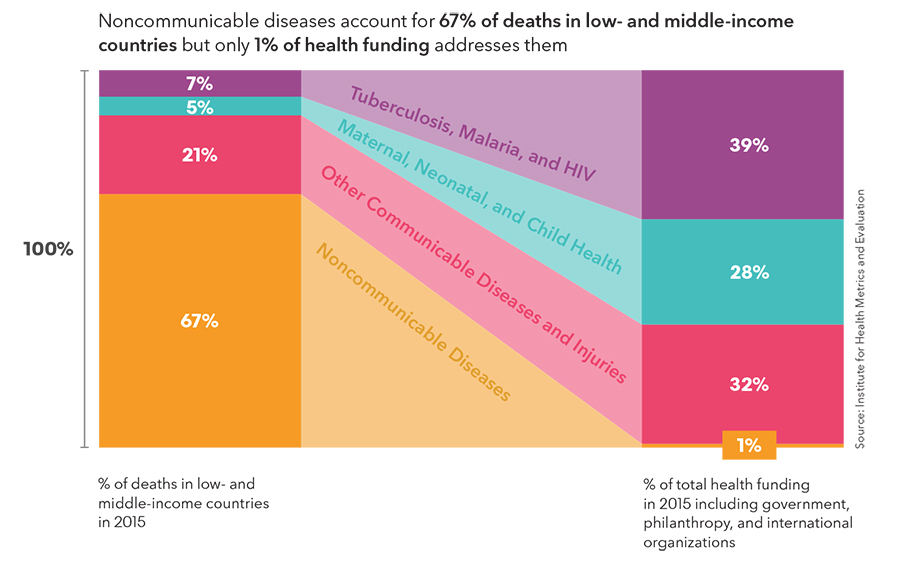“We must go where the data leads us –
and it leads directly to non-communicable diseases and injuries.”
Michael R. Bloomberg
In his Annual Letter on Philanthropy, Michael Bloomberg – founder of Bloomberg Philanthropies and former mayor of New York City – emphasizes the importance of following the data no matter where it leads us in global health. And by drawing on data from the GBD study, Bloomberg and his organization find themselves looking squarely at non-communicable diseases (NCDs), and their growing impact worldwide.
For the first time in human history, Bloomberg points out, more people around the world are dying from NCDs, like heart disease and cancer, than they are from communicable diseases such as malaria or tuberculosis. While we often assume that these are conditions of the Western world, NCDs in fact cause 67% of deaths in low- and middle-income countries, with many of these deaths happening well before the age of 70. Bloomberg argues that “our casual acceptance of NCDs has led society to tolerate them at tragically high levels,” and goes on to point out that these deaths are not inevitable. Indeed, relatively simple and affordable interventions can have a profound impact on reducing pain and suffering around the world – which is precisely where Bloomberg Philanthropies intend to direct their resources and innovation.
This attention is important because the difference between the burden of disease caused by NCDs and the amount of global health funding they receive is staggering: despite causing 67% of deaths, they receive only 1% of total funding. Reversing this gap will require awareness campaigns, supporting more comprehensive and accurate data-gathering, and evaluating program interventions for performance. As Bloomberg writes, “The truth is if you can’t measure it, you can’t manage it.”

Note: Chart comes from Bloomberg Philanthropies’ Annual Letter on Philanthropy
Many communicable diseases evoke an emotional, humanitarian response from the global community in ways that NCDs to date have not. While we may see rates of malaria or HIV as evidence of an unequal world that demands action, diabetes or heart disease rarely elicits the same feelings. Rather, we often tend to attribute these conditions to poor choices on behalf of the sufferer. However, the truth is that both communicable and non-communicable diseases trace patterns of inequality in our world: unequal access to education, to healthy foods, to safe places to exercise, or to governments that have put protective policies into action (e.g., for automotive safety or tobacco laws). NCDs are an important global health issue both in terms of reducing the total health burden, and for improving health equity worldwide.
In global health, we must look at the data, the types of interventions that are available, and the cost of implementation. We must factor in short- and long-term population health needs. We must see what is causing the most pain and suffering in our society and respond appropriately.
As the old adage goes, an ounce of prevention is worth a pound of cure. Following the data in global health might lead us to refine that ratio somewhat, but what is certain is that any investment in alleviating NCDs today could potentially offer enormous returns for future years and generations.